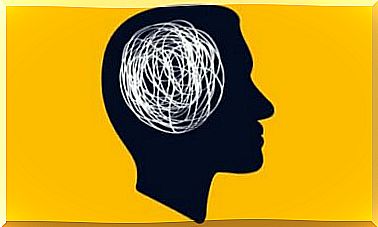3 Keys To Neurolinguistic Programming (NLP) That Will Change Your Life

NLP (neurolinguistic programming) can be very effective in changing how we perceive and interpret reality. We must not forget how our thoughts and feelings shape everything around us. That is why techniques from NLP are so useful for awareness around this and to make necessary changes.
You may have heard of neurolinguistic programming. It is more than just a psychological theory; it should be seen as a group of strategies that we can use to help grow as a human being. It was created in the 70’s by Richard Bandler and John Grinder who wanted to make it possible for people to fulfill their own life goals.
We must nevertheless point out that many are skeptical of NLP and see it as pseudoscience. That said, NLP strategies prove to be very helpful in many cases. It is also quite interesting from a psychological point of view.
One of the main goals is to link the neurological processes and language with behavioral patterns that we have collected through experience. So by correcting our cognitive behavioral patterns and taking the power away from the rigid mental maps we sometimes use, we are gradually adopting more flexible behavioral patterns.
NLP is an interesting, useful way we can change reality and shape the mind. It can change the way we perceive the world around us so we can look at it in a freer, more positive and happier way.

1. Dissociation techniques
Neurolinguistic programming tells us that our lack of confidence, as well as anxiety and stress, are activities and processes, not permanent conditions. The key, therefore, is to control these processes so that they work for us and not against us.
One way to achieve this is through dissociation. The steps are as follows:
- Identify the feelings you want to get rid of. It can be anger, sadness, fear, disappointment…
- Focus on the particular situation that is usually causing this. For example: “I get angry every time my colleagues talk behind my back.”
- Visualize the scene as if it were a movie. Add some fun music to take away the drama. Then repeat the scene in your mind a few times to reduce the negative feeling. This way you will feel that you have things under control and that the situation does not matter. Maybe you experience the situation as funny now and that the mind has disappeared.
2. Content change
Another important neurolinguistic programming technique that may seem obvious, but that does not mean that we actually use it, or use it properly. If you constantly expect bad things to happen, and always expect the worst, you can actually end up causing bad things to happen.
For example, some people may not stop thinking about what would happen to them if their partner left them. It makes them so upset that they develop obsessive behavior, jealousy, mistrust and all kinds of destructive actions. And then exactly what they fear happens , the partner leaves them because they can not stand the way they behave.
- One NLP technique that can help is content change. It is based on a cognitive technique that involves changing perceptions from fear and and changing content to more constructive things,
- For example, you may need to stop focusing on your fear of losing your partner in order to spend quality time with him / her.
- You replace the fear of being alone with accepting responsibility for yourself. You learn to love yourself more and to be strong instead of being paralyzed by fear.

3. Neurolinguistic programming: the anchoring technique
The anchoring technique is a classic NLP strategy for personal development. So what is this anchor really? It is the connection between a stimulus and an emotion. Here the intention is to enter into a more appropriate but powerful state of mind. Then you will be able to succeed with what you do.
Think about situations that make you feel anxious or insecure: exams, speaking in public, talking to someone you find attractive, etc. If you can find the right mental state, you will have the motivation and confidence you need to get out of these situations in an excellent way. Here are some simple steps you can take to begin the process of preparation for mediation.
- First identify what you want to feel: self-confidence, joy, peace…
- Try to remember a time in your life when these feelings were very prominent
- Focus on this memory and take a mental snapshot of it.
- Now choose an expression that will serve as your anchor: “I feel peace” or “peace of mind” or “everything will be fine…”
- You should repeat this sequence ( desired emotion, memory, visualization, anchor words ) daily until it is integrated into your mind. This way, it will come automatically when you need it.

Have you become curious about the fascinating world of neurolinguistic programming? Well, there is reason to be; It is accessible to all and attracts our enormous potential as human beings. For more information, we suggest the books “NLP primer” and “NLP at work. ” They work thoroughly in the subject and allow you to explore and learn how to change your life.









